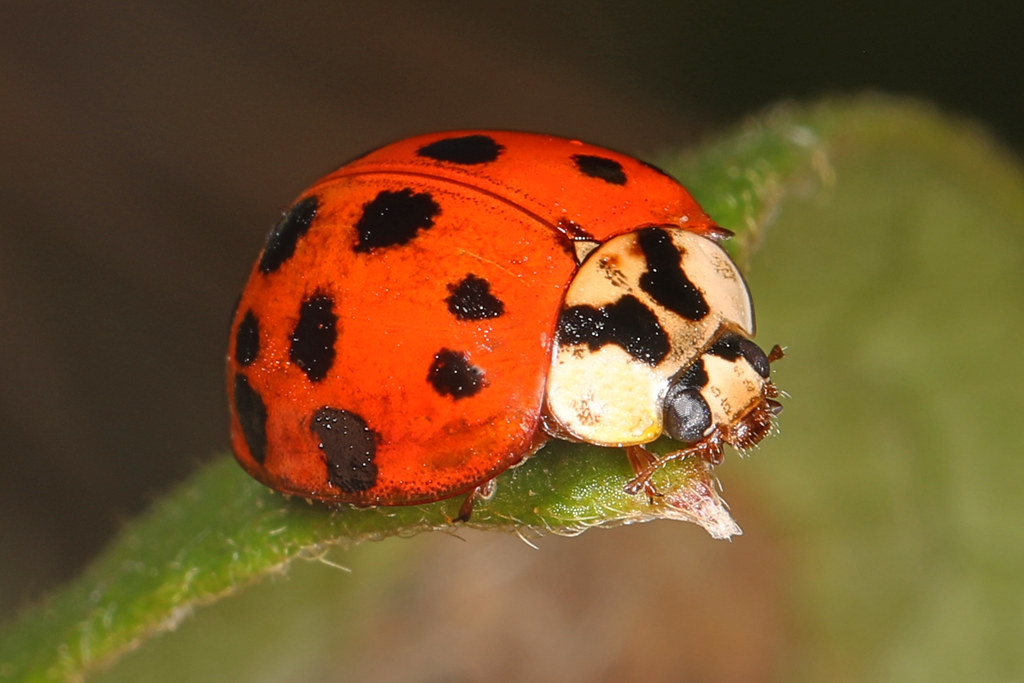You might think all ladybugs are the same – those cute, red spotted insects that bring good luck when they land on your shoulder. But there’s an imposter among them, and it’s been fooling homeowners across North America for decades. The Asian lady beetle looks remarkably similar to our beloved native ladybugs, yet it’s actually a fierce predator that’s reshaping ecosystems and invading homes by the thousands each fall.
The Great Deception: How to Spot the Difference
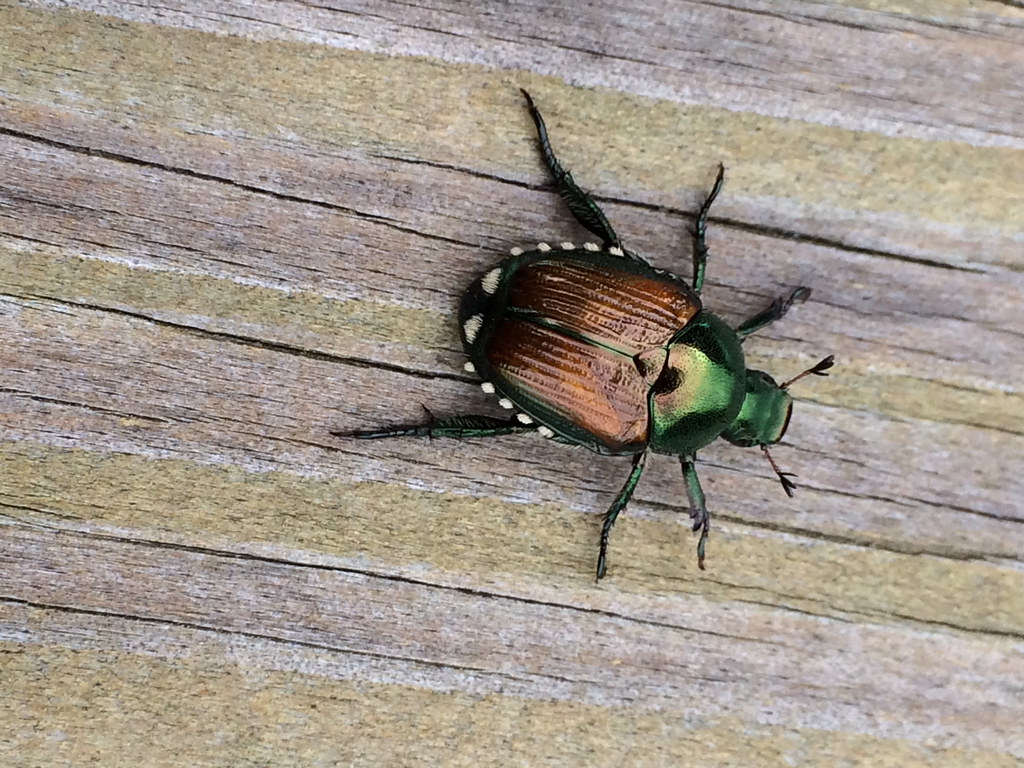
At first glance, Asian lady beetles appear nearly identical to native ladybugs, but the devil is in the details. These invasive insects typically measure about 6 millimeters in length and display a remarkable range of colors from pale yellow to deep orange-red. Unlike their native cousins, Asian lady beetles often have more prominent black spots that can number anywhere from zero to nineteen.
The most reliable identifying feature lies on their pronotum – the shield-like area behind their head. Asian lady beetles sport a distinctive black “M” or “W” shaped marking that native species lack. Their legs and antennae also tend to be more reddish-brown compared to the darker appendages of native ladybugs.
Origins of an Unwelcome Guest
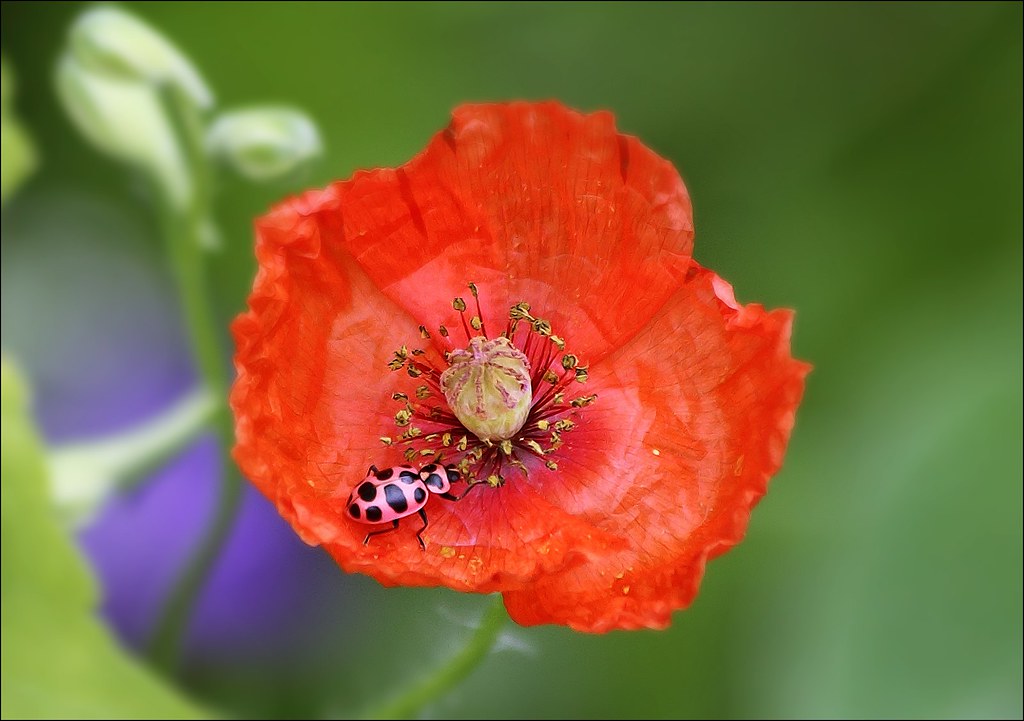
The Asian lady beetle’s journey to North America reads like an ecological thriller. Originally native to eastern Asia, including China, Russia, Korea, and Japan, these beetles were first introduced to the United States in 1916 as biological control agents. The U.S. Department of Agriculture deliberately released them in multiple states to combat aphids and other crop-damaging insects.
However, the most significant introduction occurred in 1988 when researchers released Asian lady beetles in Louisiana to control pecan aphids. This release proved devastatingly successful – perhaps too successful. Within a decade, these beetles had spread across the entire eastern United States and continue expanding their range today.
The Biological Warfare Champions
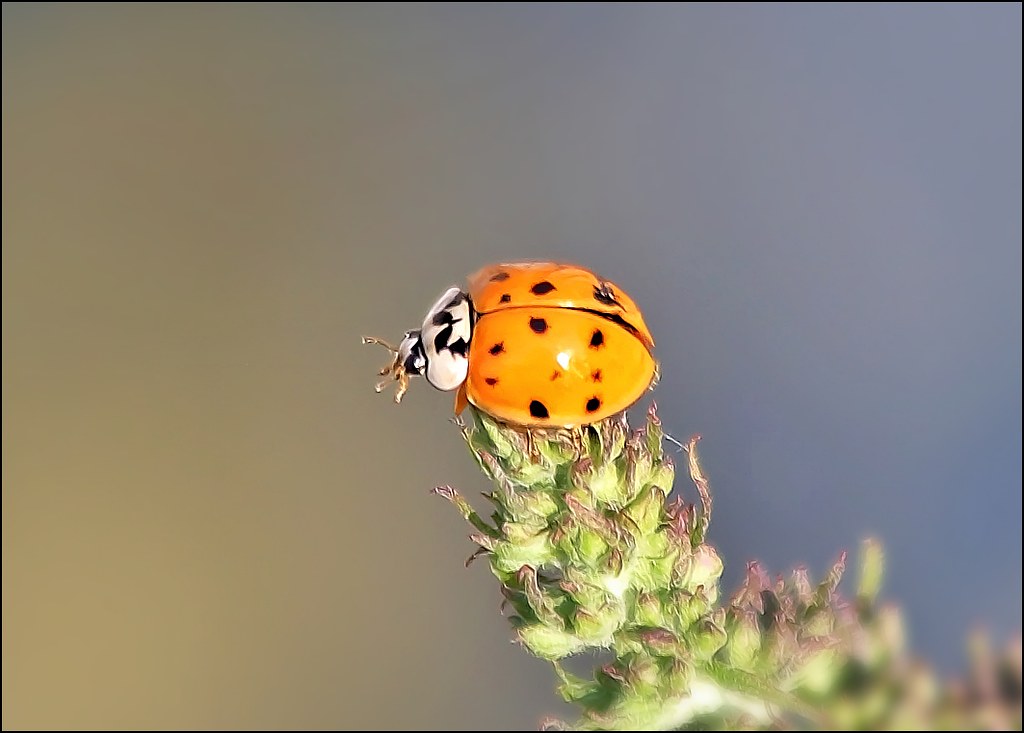
Asian lady beetles are voracious predators that can consume up to 270 aphids per day during their larval stage. Their appetite doesn’t diminish in adulthood, with each beetle capable of eating 90 to 375 aphids daily. This incredible feeding capacity initially made them heroes in agricultural pest control, earning them the nickname “multicolored Asian lady beetles.”
Their hunting prowess extends beyond aphids to include soft-bodied insects like mites, scale insects, and even small caterpillars. Unlike native ladybugs that might specialize in specific prey, Asian lady beetles are generalist predators with an almost insatiable hunger. This adaptability has become both their greatest strength and our biggest problem.
Home Invasion: The Autumn Siege

Every fall, millions of homeowners across North America face an unwelcome reality – Asian lady beetles swarming their homes. These insects engage in a behavior called “overwintering aggregation,” where thousands gather in sheltered locations to survive the cold months. Unfortunately, our warm, dry homes provide perfect winter retreats.
The beetles typically begin their invasion in late September and October, often targeting light-colored homes with southern or western exposures. They squeeze through tiny cracks around windows, doors, and siding, sometimes accumulating in wall voids by the thousands. Unlike native ladybugs that overwinter quietly outdoors, Asian lady beetles actively seek human structures for shelter.
Once inside, they can become a nightmare for homeowners. They stain walls and fabrics with their yellow defensive secretions, emit foul odors when disturbed, and some people develop allergic reactions to their presence. Spring brings another wave of activity as the beetles attempt to exit homes, often becoming disoriented and dying indoors.
The Ecosystem Disruption
The Asian lady beetle’s success story has become an ecological horror story for native species. These aggressive invaders outcompete native ladybugs for food and habitat, leading to dramatic population declines in several native species. The nine-spotted ladybug, once New York’s state insect, has nearly disappeared from many areas where Asian lady beetles dominate.
Their impact extends beyond direct competition. Asian lady beetles are known to engage in intraguild predation, meaning they’ll eat the eggs and larvae of native ladybugs and other beneficial insects. This cannibalistic behavior gives them a significant advantage in establishing populations and maintaining dominance in new territories.
Agricultural Impact: Friend or Foe?
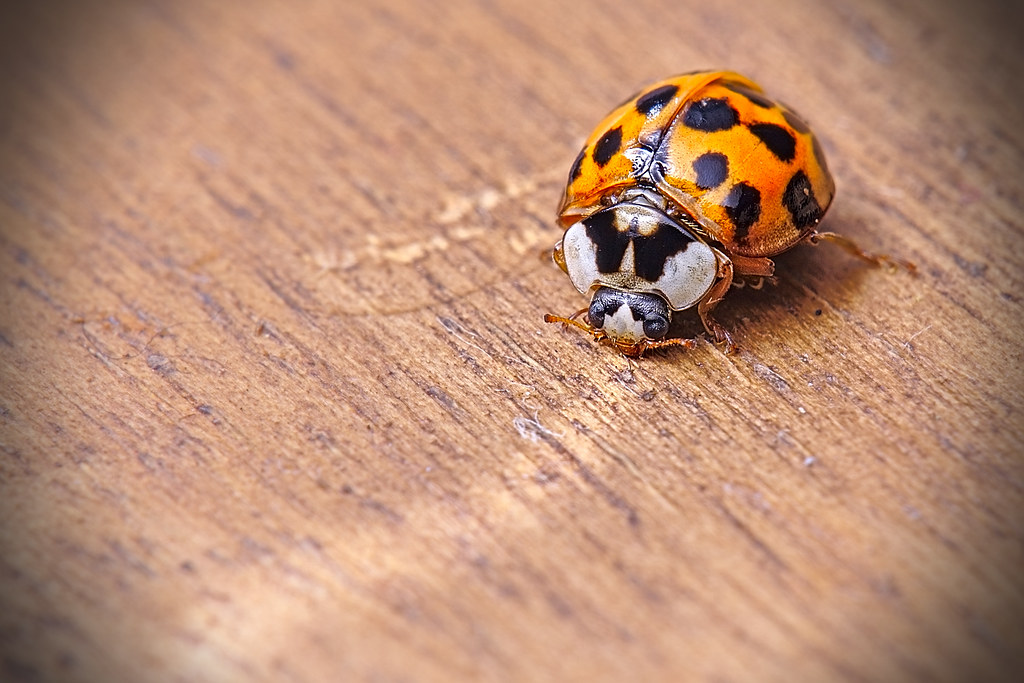
The relationship between Asian lady beetles and agriculture presents a complex paradox. On one hand, these beetles provide valuable pest control services, saving farmers millions of dollars annually in crop protection. Their voracious appetite for aphids, particularly in soybean and corn fields, has proven economically beneficial.
However, their impact on specialty crops tells a different story. Asian lady beetles have become serious pests in vineyards, where they contaminate grape harvests and taint wine with their bitter defensive chemicals. A phenomenon called “ladybug taint” can ruin entire wine productions, forcing vintners to implement expensive screening and prevention measures.
The beetles also pose problems for other fruit crops, particularly late-season fruits like apples and pears. Their tendency to aggregate in large numbers makes them difficult to control using traditional pest management strategies.
The Chemical Warfare Arsenal

Asian lady beetles possess sophisticated chemical defense mechanisms that set them apart from native species. When threatened, they release hemolymph – a yellow, foul-smelling fluid – from their leg joints in a process called “reflex bleeding.” This bitter secretion contains alkaloids that deter predators and can cause skin irritation in humans.
The chemical composition of this defensive fluid gives Asian lady beetles a significant advantage over native species. While native ladybugs also produce defensive chemicals, Asian lady beetles’ secretions are more potent and longer-lasting. This enhanced chemical arsenal helps them survive encounters with predators and establish dominance in new territories.
Seasonal Behavior Patterns
Understanding Asian lady beetle behavior requires recognizing their distinct seasonal patterns. Spring emergence typically begins in March and April when temperatures consistently reach above 60°F. During this period, beetles become active and begin searching for food and mates, often appearing in large numbers on sunny days.
Summer represents their peak activity period, with multiple generations possible in favorable conditions. Females can lay up to 3,000 eggs during their lifetime, typically depositing them in clusters on plant leaves near aphid colonies. The development from egg to adult takes approximately one month under optimal conditions.
Fall behavior dramatically shifts toward aggregation and overwintering preparation. Beetles begin clustering on warm, sunny surfaces and release aggregation pheromones that attract thousands of individuals to suitable overwintering sites. This behavior creates the massive home invasions that plague homeowners annually.
Health Concerns and Allergic Reactions
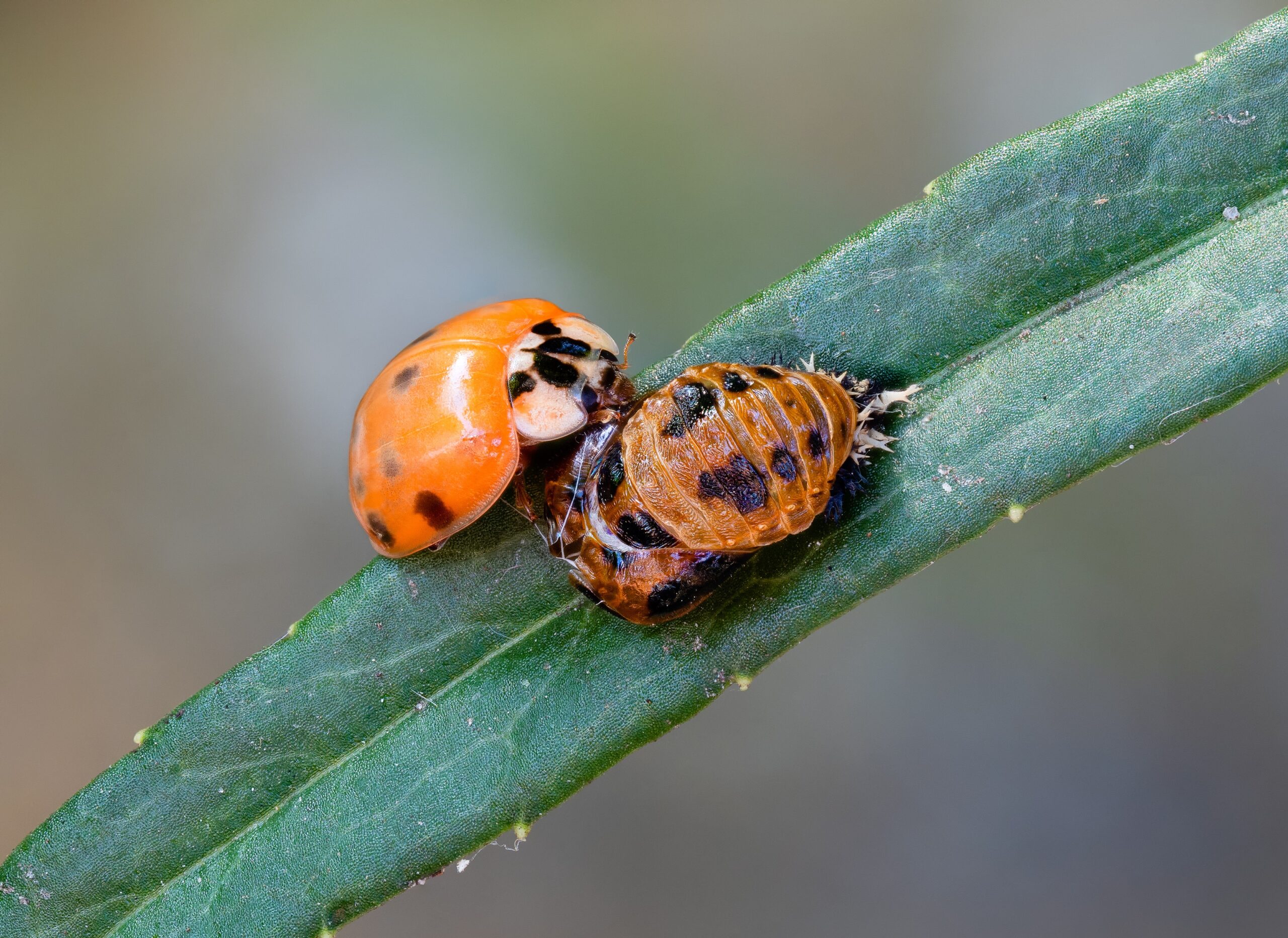
Asian lady beetles pose unique health risks that native ladybugs don’t present. Their defensive secretions can cause contact dermatitis in sensitive individuals, resulting in red, itchy welts that resemble mosquito bites. Some people develop more severe allergic reactions, including respiratory symptoms when exposed to large numbers of beetles.
Medical professionals have documented cases of “ladybug syndrome,” where individuals experience asthma-like symptoms, eye irritation, and skin rashes after exposure to Asian lady beetles. The beetles’ tendency to aggregate in large numbers indoors increases the likelihood of these health issues, particularly in children and elderly individuals.
Perhaps most concerning are reports of beetles biting humans when handled. Unlike native ladybugs that rarely bite, Asian lady beetles can deliver painful nips that may cause localized swelling and irritation. These bites, while not dangerous, can be particularly startling for children who assume all ladybugs are harmless.
Geographic Expansion and Climate Adaptation
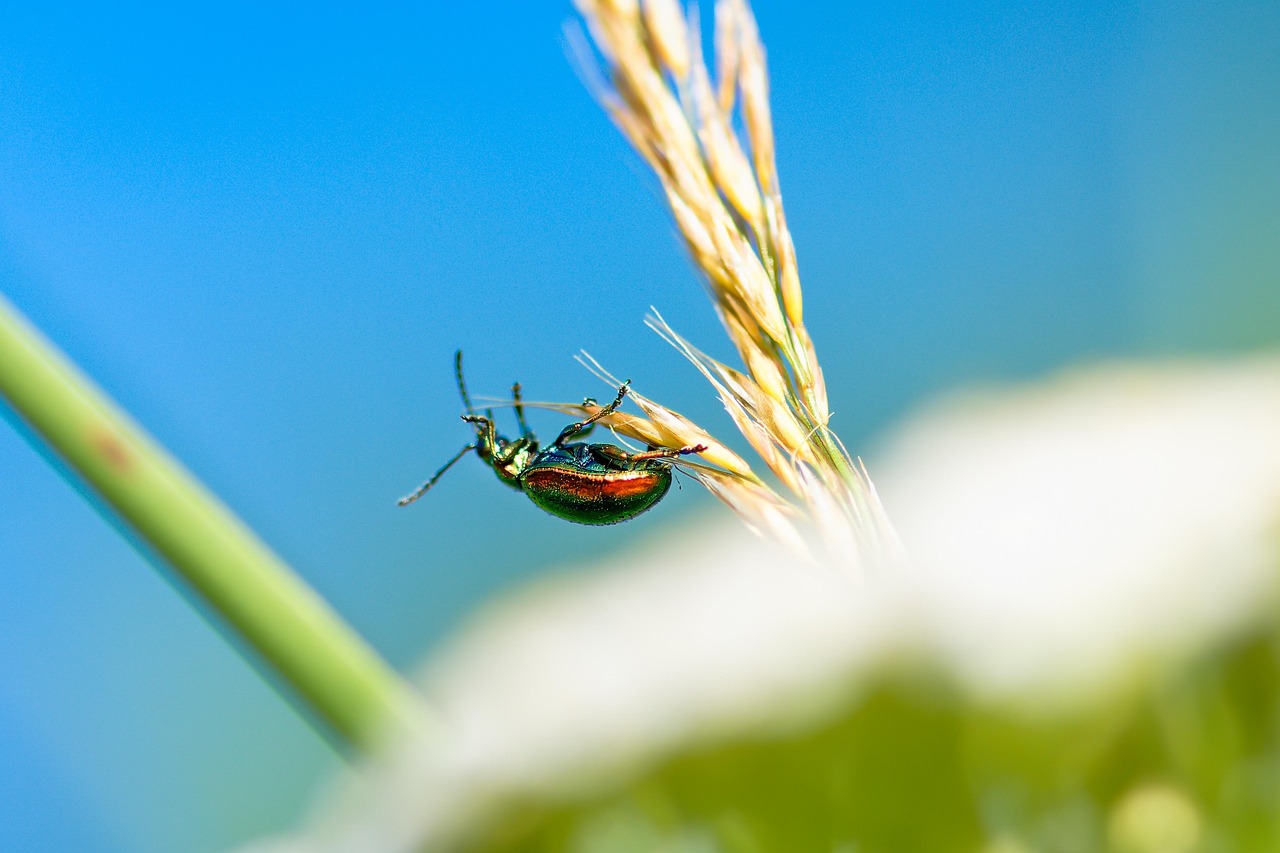
The Asian lady beetle’s range expansion across North America has been nothing short of remarkable. From their initial introduction points, these insects have colonized virtually every state in the continental United States and several Canadian provinces. Their adaptability to diverse climates has enabled this rapid spread.
Climate change appears to be facilitating their continued expansion northward. Warmer temperatures allow for longer breeding seasons and improved overwintering survival rates. Researchers predict that Asian lady beetles will continue expanding their range as climate patterns shift, potentially reaching areas previously too cold for their survival.
Their ability to utilize human-modified landscapes gives them significant advantages over native species. Unlike native ladybugs that require specific habitat conditions, Asian lady beetles thrive in agricultural areas, suburban landscapes, and even urban environments. This habitat flexibility has been crucial to their invasion success.
Natural Predators and Control Challenges
Few natural predators effectively control Asian lady beetle populations, contributing to their invasion success. Birds occasionally consume them, but the beetles’ chemical defenses make them unpalatable to most predators. Some spider species and parasitic wasps attack Asian lady beetles, but these natural enemies haven’t provided meaningful population control.
The beetles’ tendency to aggregate in massive numbers makes biological control particularly challenging. Even if natural predators were present in sufficient numbers, the beetles’ defensive chemicals would likely deter effective predation. This lack of natural controls has allowed Asian lady beetle populations to explode unchecked.
Interestingly, Asian lady beetles sometimes fall victim to fungal diseases that can cause dramatic population crashes. However, these natural mortality factors operate sporadically and haven’t provided consistent population management across their range.
Management Strategies for Homeowners
Homeowners facing Asian lady beetle invasions have several management options, though complete elimination proves nearly impossible. Prevention remains the most effective approach, focusing on sealing entry points before fall aggregation begins. Caulking gaps around windows, doors, and utility penetrations can significantly reduce indoor invasions.
Physical removal methods work best for small infestations. Vacuuming beetles provides immediate relief, though the vacuum bag should be disposed of promptly to prevent odor problems. Avoid crushing beetles, as this releases their defensive chemicals and can stain surfaces. Light traps can also help capture beetles attempting to enter homes.
Professional pest control services offer more comprehensive solutions for severe infestations. Residual insecticides applied to building exteriors can provide season-long protection when applied before aggregation begins. However, these treatments must be carefully timed and properly applied to achieve maximum effectiveness.
Research and Future Outlook
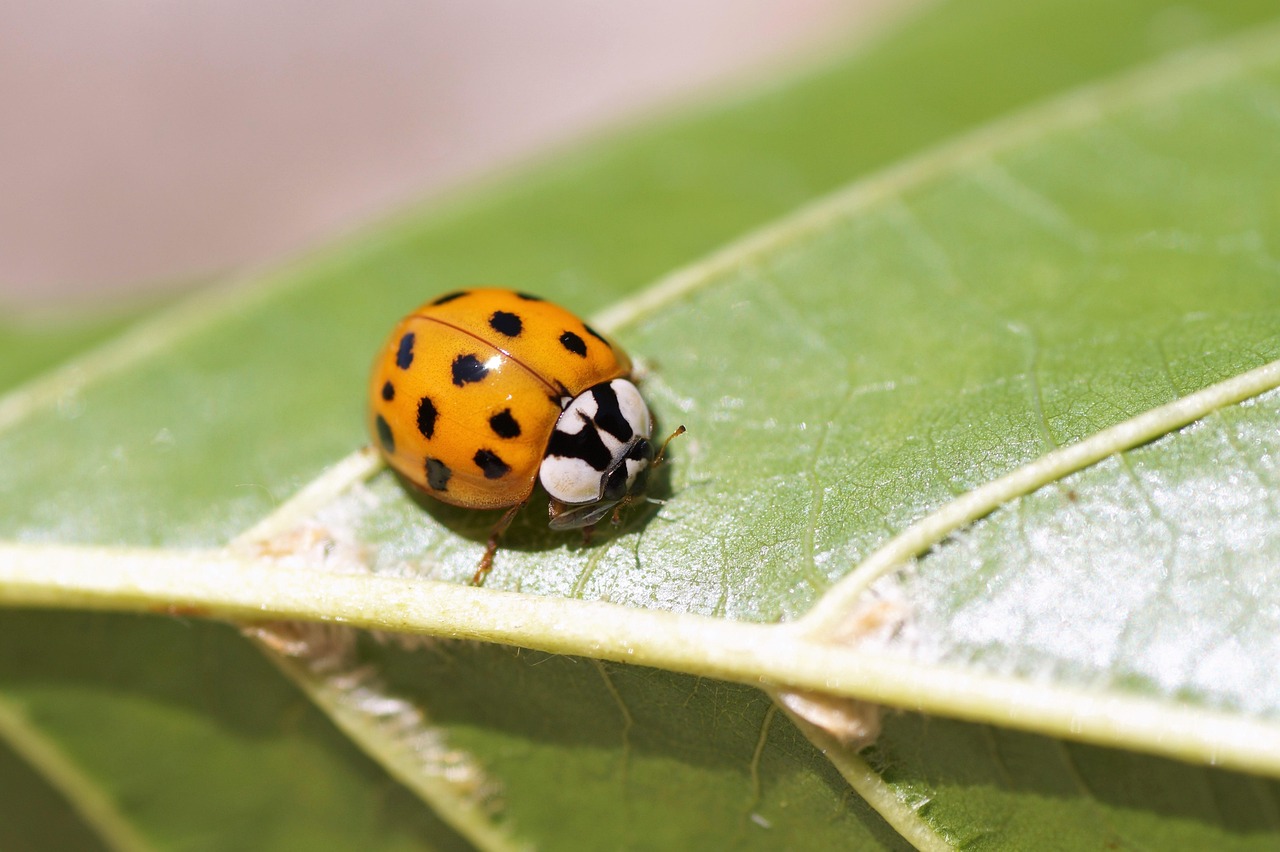
Scientists continue studying Asian lady beetles to better understand their ecological impact and develop improved management strategies. Recent research has focused on their chemical ecology, particularly the pheromones that drive aggregation behavior. Understanding these chemical signals could lead to more effective trapping and control methods.
Genetic studies have revealed significant diversity within Asian lady beetle populations, suggesting multiple introduction events and ongoing gene flow between populations. This genetic diversity may contribute to their adaptability and invasion success. Researchers are investigating whether genetic approaches could provide novel control options.
Climate modeling studies predict continued range expansion for Asian lady beetles, with potential colonization of northern regions previously unsuitable for their survival. This research helps predict future invasion patterns and enables proactive management planning. Long-term monitoring programs track population trends and ecosystem impacts across their range.
Conservation Implications
The Asian lady beetle invasion serves as a stark reminder of how introduced species can fundamentally alter ecosystems. Their impact on native ladybug populations has been devastating, with some species experiencing range-wide declines. The lost-ladybug project, a citizen science initiative, documents these changes and tracks native species recovery efforts.
Conservation biologists worry that Asian lady beetles may push some native species toward extinction through competitive exclusion and direct predation. The nine-spotted ladybug, once abundant across North America, now exists in isolated populations and may require active conservation intervention to prevent extinction.
Recovery efforts for native ladybugs face significant challenges due to Asian lady beetle dominance. Habitat restoration alone may not suffice if invasive species continue monopolizing resources. Integrated management approaches that combine habitat improvement with invasive species control may offer the best hope for native species recovery.
The Asian lady beetle invasion represents one of North America’s most successful and problematic biological invasions. These deceptive insects have fundamentally altered ecosystems, created significant nuisance problems for homeowners, and challenged our understanding of species interactions. Their continued expansion threatens native biodiversity while providing complex agricultural benefits. Managing this invasion requires sustained effort, innovative research, and coordinated action across multiple sectors. As climate change facilitates their spread, the Asian lady beetle story serves as a cautionary tale about the unintended consequences of biological introductions. What lessons will we learn from this tiny invader that has reshaped an entire continent?

